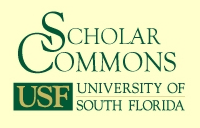Abstract
Sustainable fishing has become a challenging problem for commercial fishermen all over the world. Many efforts to pursue a livelihood based on commercially harvesting fish suffer from catch limits and closings intended to protect diminishing fish resources; rising prices for waterfront real estate that currently houses their home ports; and competition from recreational fishermen. In order to continue a commercial fishing way of life, fishermen are resorting to what they are told represent economic sustainable alternatives to fishing, including aquaculture, retail markets, educational/museum facilities, restaurants, and parks. Yet, can a fisherman remain a fisherman if he is seen as an ‘artist in residence’ in an educational facility or a farmer tending his tilapia? Are these truly economically sustainable alternatives to fishing or merely ways of maintaining a visceral connection to our maritime heritage and as such offer little to the fishermen in terms of maintaining their way of life? This paper explores a case study with fishermen in Belford, New Jersey, and suggests fisherman can be willing to become part of a new vision for the area and how some are surprisingly comfortable with the creation of an educational/ museum facility as a way to keep fishing in Belford.
DOI
http://dx.doi.org/10.5038/2162-4593.13.1.5
Recommended Citation
Jones, Barbara. "Teetering Towards Economic Sustainability: Alternatives for Commercial Fishermen." Journal of Ecological Anthropology 13, no. 1 (2009): 73-77.
Available at: https://digitalcommons.usf.edu/jea/vol13/iss1/5
